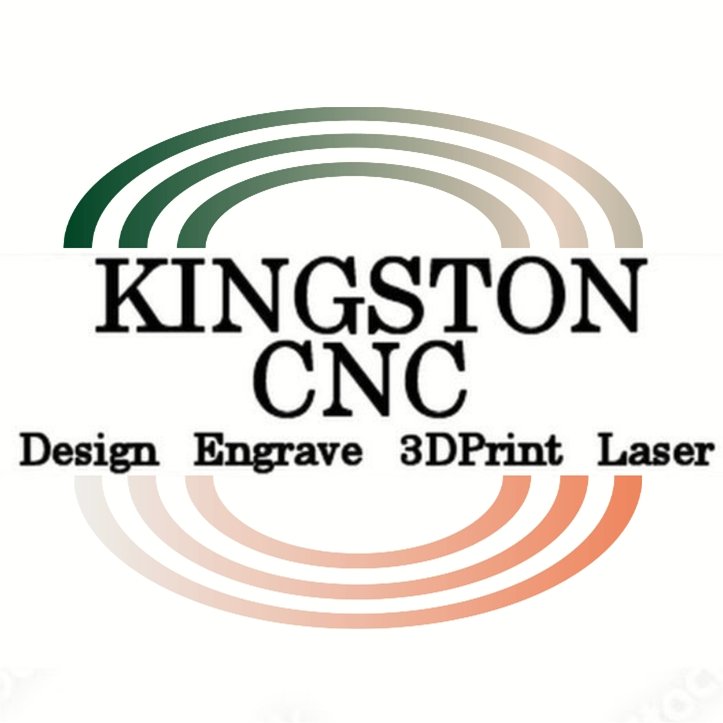Choosing the Right End Mill for the Job
One of the challenges of using small CNC routers, such as Shapeoko, Longmill, etc., is choosing the right end mill for the job. End mills are cutting tools that remove material from the workpiece and create the desired shape and size. There are many types of end mills, but they can be broadly classified into two categories: up cut and down cut.
Up cut end mills are designed to pull the chips up and away from the workpiece, which helps to prevent clogging and heat buildup. However, they also tend to lift the material from the table, which can cause tearout and poor surface finish on the top edge. Up cut end mills are suitable for cutting soft materials, such as wood and plastic, that do not require a smooth top surface.
Down cut end mills are designed to push the chips down and into the workpiece, which helps to hold the material in place and create a smooth top surface. However, they also tend to compress the material and generate more heat, which can cause melting and burning. Down cut end mills are suitable for cutting hard materials, such as metal and laminate, that require a smooth top surface.
Combination end mills are a hybrid of up cut and down cut end mills. They have both up and down flutes that alternate along the cutting edge, which helps to balance the forces and reduce vibration. Combination end mills can be used for cutting a variety of materials, but they may not perform as well as specialized end mills for specific applications.
Another factor to consider when choosing an end mill is the number of flutes. Flutes are the spiral grooves that run along the length of the end mill and carry the chips away from the cutting edge. The number of flutes affects the cutting speed, feed rate, chip removal, and surface finish.
Generally, more flutes mean faster cutting speed and smoother surface finish, but less chip removal and lower feed rate. Fewer flutes mean slower cutting speed and rougher surface finish, but more chip removal and higher feed rate. The optimal number of flutes depends on the material, depth of cut, and desired finish.
For example, a two-flute end mill is ideal for cutting soft materials with a large depth of cut, as it allows for efficient chip evacuation and high feed rate. A four-flute end mill is ideal for cutting hard materials with a small depth of cut, as it provides more cutting edges and better surface finish. A three-flute end mill is a good compromise for cutting both soft and hard materials with moderate depth of cut.
The material of the end mill also affects its performance and durability. The most common materials are high-speed steel (HSS), solid carbide, carbide tipped, and coated.
HSS end mills are made of a steel alloy that can withstand high temperatures and retain its hardness. They are relatively cheap and versatile, but they wear out faster than carbide end mills. HSS end mills are suitable for general-purpose milling of various materials.
Solid carbide end mills are made of a hard material that can resist abrasion and corrosion. They are more expensive than HSS end mills, but they last longer and provide better performance. Solid carbide end mills are suitable for high-precision milling of hard materials.
Carbide tipped end mills have a steel body with a carbide insert at the cutting edge. They combine the strength of steel with the hardness of carbide. They are cheaper than solid carbide end mills, but they have less rigidity and accuracy. Carbide tipped end mills are suitable for rough milling of hard materials.
Coated end mills have a thin layer of coating on the surface that enhances their properties. The most common coatings are titanium nitride (TiN), titanium carbonitride (TiCN), titanium aluminum nitride (TiAlN), and diamond-like carbon (DLC). Coatings can improve the hardness, wear resistance, lubricity, heat resistance, and corrosion resistance of the end mill. Coated end mills are suitable for milling difficult-to-cut materials or extending tool life.
Finally, different types of end mills have different shapes at the tip that determine their suitability for different types of cuts. The most common shapes are flat, ball nose, corner radius, corner chamfer, corner rounding, dovetail, keyseat cutter, T-slot cutter, woodruff cutter, etc.
Flat end mills have a flat tip that produces a square corner at the bottom of the cut. They are used for making pockets, slots, grooves, etc.
Ball nose end mills have a round tip that produces a curved surface at the bottom of the cut. They are used for making 3D contours, scallops, etc.
Corner radius end mills have a slightly rounded tip that produces a smooth corner at the bottom of the cut. They are used for making fillets, blends, etc.
Corner chamfer end mills have a angled tip that produces a beveled corner at the bottom of the cut. They are used for making chamfers, deburring, etc.
Corner rounding end mills have a convex tip that produces a rounded corner at the bottom of the cut. They are used for making radii, edges, etc.
Dovetail end mills have a tapered tip that produces a dovetail groove at the bottom of the cut. They are used for making dovetail joints, etc.
Keyseat cutter end mills have a narrow tip that produces a keyseat groove at the bottom of the cut. They are used for making keyways, etc.
T-slot cutter end mills have a T-shaped tip that produces a T-slot groove at the bottom of the cut. They are used for making T-slots, etc.
Woodruff cutter end mills have a half-circle tip that produces a woodruff groove at the bottom of the cut. They are used for making woodruff keys, etc.

No comments yet.